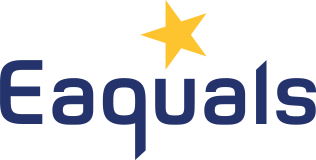The Eaquals quality standards
The Quality Standards give language centres an outline of the organisational framework and processes which should be in place before an institution can become an Accredited Member of Eaquals.
-
Management and Administration
- There is an institutional ethos which provides the foundation for the institution’s activities.
- The leadership and organisational structure of the institution support this mission and the achievement of its objectives.
-
Teaching and Learning
- The pedagogical approach and methods reflect the institution’s educational philosophy.
- The quality of course delivery consistently provides opportunities for effective learning.
- Lessons are planned with reference to the course programme and the learning and motivational needs of individuals and the group; specified learning outcomes are shared with learners.
- The opportunities offered for learning are varied, making use of available technology and resources.
- Learners have the opportunity to develop their study skills and to share responsibility for their own learning.
-
Course Design and Supporting Systems
- There is a statement of the institution’s educational philosophy and written descriptions of its learning programmes, including course objectives and content.
- All language course programmes are specified by levels which refer to the CEFR, and learning objectives are related to the global descriptors of CEFR levels.
- There is an academic management and coordination structure, with supporting systems, which ensure the implementation of the institution’s educational philosophy.
-
Assessment and Certification
- Assessment procedures are compatible with the institution’s educational philosophy and course objectives.
- Placement procedures are appropriate to the learning context and learners’ needs.
- Systems for assessing language competence provide reliable, valid and fair means of evaluating progress and achievement in a way that is appropriate for the course and the learners.
- Reports and certificates issued to learners indicate their achievements in terms of the course objectives and content. They provide a reliable statement of the level achieved.
- Where information on public examinations is provided, relevant advice and support is given to learners.
-
Academic Resources
- The course books or other core course materials, online learning platforms and resources, and reference materials reflect course objectives and the methodology used.
- There is a system for monitoring learning material developed in-house.
- All equipment and electronic connectivity is accessible and well maintained.
-
Learning Environment
- The teaching and study environment meets the requirements of course programmes and learners.
- Any non-pedagogical facilities and/or spaces required for the services offered are fit for purpose and well maintained.
- Arrangements are made to protect the health and ensure the safety of learners and staff.
-
Client Services
- Advice and support is available to learners and sponsors throughout the course, including welfare arrangements, where appropriate.
- There are systems for monitoring and administering the provision of any leisure programme and/or accommodation. Any social programme takes account of learners’ interests.
-
Quality Assurance
- There are systems to foster a culture of quality through continuous evaluation, reflection and action.
- The learning experience is fully monitored by management systems (including regular classroom observations) which are used to improve the quality of all services.
- There are procedures which enable learners and sponsors to give regular feedback relating to the academic and other services provided.
-
Staff Profile and Development
- The competences, experience and qualifications of managers, teachers and administrative staff are relevant and adequate for each area of responsibility.
- There are systems to provide appropriate support and guidance for all staff including a regular staff performance review.
- There is a formal framework to assure appropriate continuous professional development for all staff.
-
Staff Employment Terms
- All staff hold current employment contracts; these conform to local requirements, as confirmed by the statutory declaration of the institution.
- The terms and conditions of employment offered to staff are fair and conform to local requirements.
-
Internal Communications
- The responsibilities, lines of accountability and channels of communication among members of management and/or staff are clearly defined and documented.
- There is formal, documented, communication and consultation between staff and managers, scheduled as appropriate.
- Information is available to staff about the institution, its mission and any planned developments.
- Grievance and disciplinary procedures are in place for staff and are known to them.
- Information about Eaquals and its resources is available to staff and learners.
-
External Communications
- All promotional materials accurately describe the institution’s learning services: the range and functionality of resources and/or online tools offered, and other services and facilities.
- Contractual information provided to learners and sponsors is accurate and complete, and expressed in easily understood language.
- Accredited members make information about Eaquals publicly available; they display the Eaquals Charters publicly, and use the Eaquals logo correctly.



